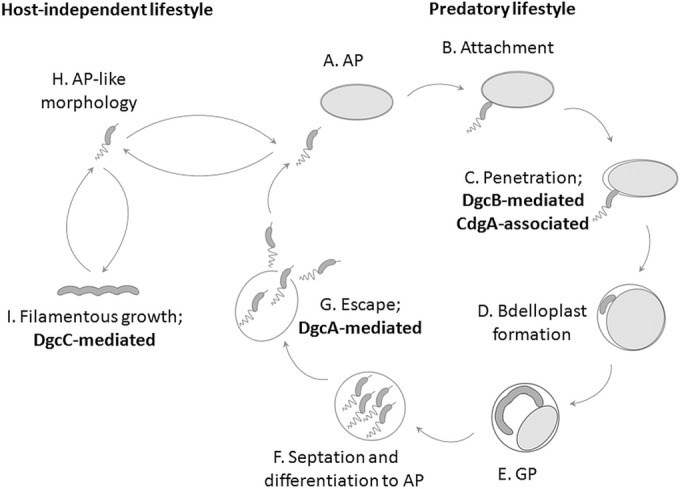FIG 1.

Cyclic di-GMP control over the progress of B. bacteriovorus cell cycle: wild-type B. bacteriovorus maintains an obligate predatory biphasic life cycle. (A) Nonreplicating free-living and fast-swimming vibrioid AP cells search for prey. (B and C) Encountering of the prey cell is followed by irreversible attachment (B) and then by DgcB-dependent and CdgA-associated invasion into the prey periplasm (C). CdgA is a cyclic di-GMP effector that interacts with the invasion-essential type IVa pilus regulatory hub. (D) During entry and settlement, the bdelloplast is formed. (E) Within the bdelloplast, the predator enters GP, consumes the prey and grows as a multinucleoid filament. (F and G) Upon nutrient depletion, the filament divides to progeny AP cells that lyse and escape from the bdelloplast (F), the latter necessitating DgcA, which is essential for development of both flagellar and gliding motility (G). The nascent AP cells are ready for another predation cycle. (H and I) HI mutants are not restricted to the predatory lifestyle and, while remaining predatory, they can grow saprophytically via the DgcC pathway, retaining the dimorphic cell cycle.
